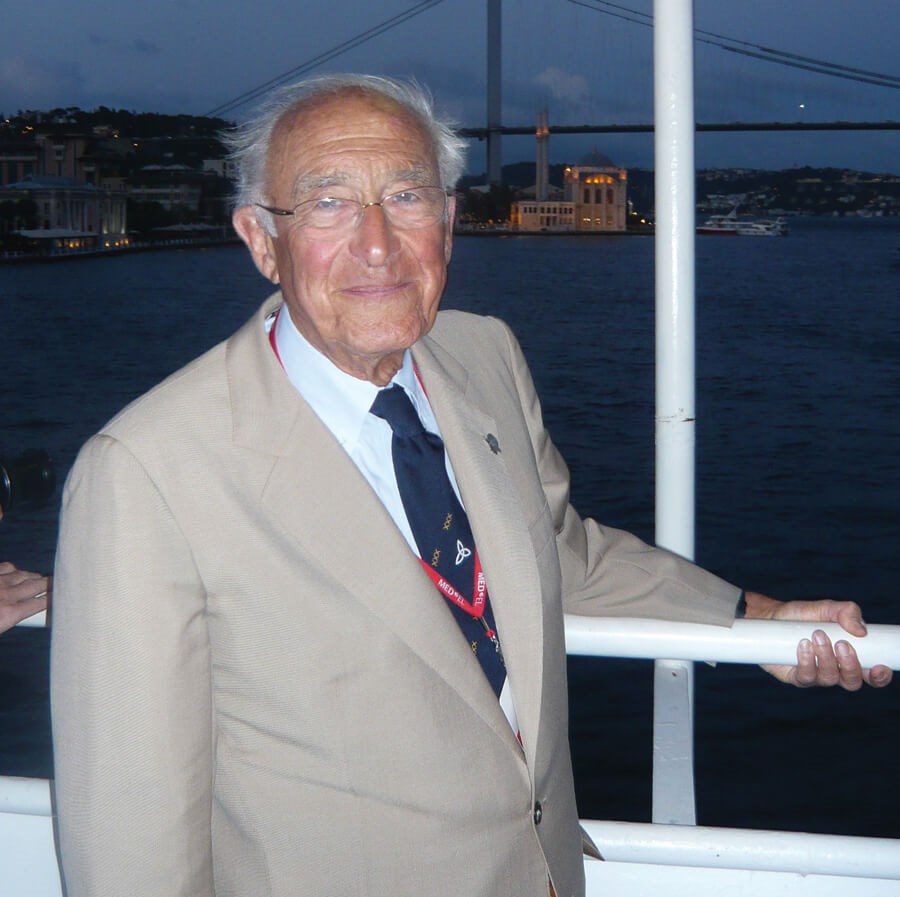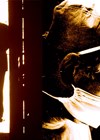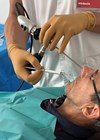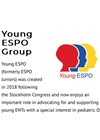Professor Jean-Marc Sterkers has been a leading figure in the field of otology and neurotology for several decades. On the verge of his 100th birthday, we celebrate an exceptional career through the memories of his son and colleagues.

Prof Olivier Sterkers, Professor Emeritus, Sorbonne University; Member of the French Academy of Surgery, Paris, France.
Born on 15 May 1925, Jean-Marc Sterkers graduated as a medical doctor from the Faculté de Médecine de Paris in 1957. He was externe, then interne des Hôpitaux de Paris, and specialised in otorhinolaryngology. His medical thesis was on ‘Surgical treatment of stapes fixation by platino-crack with and without stapedolysis’, directed by his mentor in otology, Pierre Clerc. He became ORL des Hôpitaux de Paris in 1962 and visited John Shea in Memphis in 1964. When going to Los Angeles to see his sister, he was advised by Shea to visit Bill House.
On his return to Paris, the neurotological journey began with a focus on the early diagnosis of vestibular schwannomas (VS) using audiometry and minimal neurological imaging of the cerebellopontine angle. Transpetrous approaches to the internal auditory meatus and the angle were practised on cadavers.
He served as chief of the paediatric ORL department at Hôpital Saint Vincent de Paul and the adult ENT department at Hôpital Cochin, while also holding the title of Professor at the Collège de Médecine des Hôpitaux de Paris – a non-university position that nonetheless provided scholarships for young foreign ENT specialists. Many of them came to Paris to study under Prof Sterkers and learn his surgical techniques.
He has performed over 3000 vestibular schwannoma surgeries, beginning with small and medium-sized tumours and eventually progressing to larger ones – often operating solo. In the late 1970s, he described the retrosigmoid approach in the supine position as a method to preserve hearing in patients with small VS, particularly in bilateral cases. Over a 30-year period, several advances made this work possible: progress in audiology through brainstem-evoked auditory potentials; improvements in imaging with CT scans and, later, MRI; refinements in anaesthetic protocols; the introduction of intraoperative facial nerve monitoring; and the evolution of surgical techniques, including both sharp and hydro-dissection of the facial nerve from the tumour. These methods were also applied to other pathologies of the lateral skull base.
This remarkable surgical career came to a close at the age of 82 – primarily because he could no longer obtain insurance for neurotological procedures.

Prof Abdelhamid Benghalem, Professor of Otolaryngology and Maxillofacial Surgery (Professeur agrégé), Casablanca, Morocco.
Since high school, it had been my dream to become a neurosurgeon — a goal that became possible during my medical studies, when I ranked first in the 1983 residency exam at the University Hospital of Casablanca.
After spending 18 months as a neurosurgery resident, I switched to ENT for local reasons. My mentor, Professor Hamza Ouazzani, met Prof Jean-Marc Sterkers at the ENT World Congress in Miami. He recommended that I apply for a one-year residency position in the Parisian hospitals. Out of 720 candidates from around the world, I was selected for one of only 42 positions, and became a resident under Prof Sterkers at Hôpital Cochin.
"He opened both his heart and his home to me, welcoming me as part of his family alongside my dear ‘brother’ Olivier"
My life changed dramatically from my very first day at Hôpital Cochin, when he told me, “You will be in my shadow.” I remained physically by his side – at Cochin and Saint Vincent de Paul hospitals, the Val de Grâce, and the Bachaumont Clinic – where I discovered the new and exciting field of otoneurosurgery. I have remained spiritually with him since then.

Hamid Benghalem with Prof Sterkers.
From the very beginning, I was embraced by his kindness, his spirit, and his immense knowledge and professionalism. He opened both his heart and his home to me, welcoming me as part of his family alongside my dear ‘brother’ Olivier.
My mentor gave me the opportunity to develop a well-recognised practice in otology and otoneurosurgery in Morocco and the Maghreb, with over 1000 acoustic neuromas operated on since my return home in 1987. My gratitude to Professor Jean-Marc Sterkers is unlimited and eternal.

David Bowdler, Consultant Otologist, UK.
In a career spanning more than 50 years, there were few for whom I had unreserved respect, but I would unhesitatingly include Jean-Marc Sterkers in my vanishingly small list of medical heroes.
I was lucky enough to work for him in 1988 as one of his overseas fellows. On the first day, he asked me if I wished to speak in English or French. Naturally I chose French despite the paucity of my linguistic skills. Unfortunately, he held me to my word, which made the first few weeks very interesting, particularly as fellows also acted as his scrub nurse for VS surgeries.
So, apart from French what did I learn as a budding head and neck surgeon? He showed me a world of excellence outside head and neck, specifically skull base surgery and otology in general, to which I had not previously been exposed. His work ethic, surgical brilliance, clinical judgement and teaching skills, allied to his humour, kindness and generosity, were exemplary, even if it was difficult to stay awake for dinner at 11 in the evening after three VS surgeries.
Much that I learnt from the great man shaped my future career, particularly my change from head and neck to otology. I cannot begin to describe the impact he had on the direction of my subsequent surgical career, but I know it would have been the poorer without his extraordinary influence. I am certain he was just as important to all his lucky overseas fellows!
Félicitations pour tes 100 ans, avec tous mes meilleurs vœux!

Prof Mohamed Badr-El-Dine, Professor of ENT, Alexandria University, President of the Egyptian Society of Skull Base Surgery, Egypt.
During the year 1989–1990, I had the incredible privilege of working under the mentorship of Prof Sterkers at Hôpital Cochin, Paris. This period was a transformative chapter in my professional and personal development.
"Under his guidance, I was exposed to cutting-edge medical practices, innovative techniques and a profound depth of clinical judgement that significantly refined my expertise"

On 31 October, 1990, during the ceremony for awarding the ‘Resident Étranger des Hôpitaux de Paris’ certificates at the Collège de Médecine. (L-R): Mr François Stasse, Director General of Assistance Publique, Hôpitaux de Paris; Prof Mohamed Badr; and Prof Sterkers, Chairman of the ENT Department at Hôpital Cochin.

(L-R): Prof Badr, Prof Sterkers and Dr Pacal Corlieu, Chef de Clinique at the Department of ENT, Hôpital Cochin, Paris, May, 1990.
Prof Sterkers’ profound knowledge, unwavering guidance and remarkable dedication to his field significantly shaped my approach to otology and neurotology. Under his guidance, I was exposed to cutting-edge medical practices, innovative techniques and a profound depth of clinical judgement that significantly refined my expertise. Beyond the professional skills, his wisdom, integrity and humility deeply influenced me on a personal level, teaching me the values of patience, perseverance and compassionate care. His impact remains a cornerstone of my journey. I am forever indebted to him for his unwavering support, encouragement and the invaluable lessons he imparted, which continue to influence my career and personal values to this day. His mentorship was a true gift, and I will always hold his impact in the highest regard.

Prof John E Fenton, Consultant in Academic ORL-HNS, University Hospital Limerick, Ireland.
My first formal temporal bone course was under Prof Jean-Marc Sterkers (JMS) in 1989. I applied to be his fellow in neurotology while training with Professor Paul Fagan in Australia and he was apologetic that, as a non-EU Antipodean, he couldn’t appoint me. I was sitting beside his great friend, the late Dr John Tonkin, when I received this rebuttal, and JT promised to sort it out. I arrived home to Dingle on Christmas Eve, 1994 to find a JMS job offer.
I concur with the sentiments expressed by my colleagues in this article, and my time in Paris under Prof Sterkers’ tutelage was a truly wonderful experience. To this day, I still use his advice that asymmetry as an indicator for MRI in vestibular schwannoma is when the patient tells you that there is a difference between the ears. He also recommended checking serum magnesium in recalcitrant dizzy patients and highlighted the significant impact of stress in destabilising vestibular hypofunction – as demonstrated in an early 20th-century French experiment involving sharks with severed vestibular nerves during feeding frenzies.
Inspired by my time in Paris, Seurat’s Bathers at Asnières has adorned many of my presentations. World and international conferences on acoustic neuroma, skull base surgery and cochlear implants were hosted in Paris during my tenure. If hospital waiting lists are a measure of a successful health system, the French approach beats the Anglo-Saxon one by the proverbial 1.6 kilometres. Prof Sterkers’ abilities as a person, surgeon and teacher are incomparable.
Félicitations, Professeur JMS.

Prof Hao Wu, Professor and Director, Ear Institute and Ninth People’s Hospital, Shanghai Jiaotong University School of Medicine, Shanghai, China.
In 1995, Prof Jean-Marc Sterkers visited Shanghai for the first time with Professor Alain Rey, and it was my privilege to receive them. He gave lectures and performed live surgery on acoustic neuroma using the translabyrinthine approach in Shanghai, Xian and Beijing. I had the opportunity to be an assistant during the surgery and was fascinated by his otoneurosurgical procedures.
In 1996, I obtained the position of resident in the neurosurgical department of Hôpital Beaujon in Paris and joined the otoneurosurgical team, consisting of neurosurgeons and otologists, for two and half years. During that time, Prof Sterkers mainly performed acoustic neuroma surgeries at Bachaumont Clinic (a private hospital) every Wednesday and Thursday. He usually had two cases each day, and I had the opportunity to be an observer of the procedures. He also handled complex and challenging cases at Hôpital Beaujon. I followed him to learn otoneurosurgery techniques and was deeply influenced by his treatment philosophy, methods and patient care approach.

Prof Sterkers (right) and Prof Alain Rey (left) first visited Shanghai in November 3, 1995, received by Prof Wu (centre).

Prof Wu and Prof Sterkers at an international conference in Paris on 20 March 2012.
In December 1998, I returned to China after finishing my training in Paris. Upon my return, I established an otologic, neurotologic and skull base surgery centre in Shanghai, building a team and initiating a series of surgeries including acoustic neuroma, jugular foramen tumours, cochlear implants and auditory brainstem implants. I also established an ear institute in Shanghai Jiaotong University. From 2000 to 2010, Prof Sterkers came to our centre and we organised several temporal bone dissection courses for training Chinese and other Asian otologists. This played a significant role in advancing the field of neurotology in China. Today, our ear institute has become one of the most renowned centres in the country and also holds an international reputation.

Questions to Prof Jean-Marc Sterkers
What would be your single most important piece of advice for a trainee or young specialist commencing a career in neurotology / lateral skull base surgery?
Engage in hands-on training and observation of surgical cases, as well as participating in dissection and live-surgery courses. Then visit, for at least a few days, established skull base centres.
Do you look back fondly on any specific era or phase of your career?
The last otological surgery I performed when I was 82 years old!
Would you do it all again? What would you do differently?
I would do it similarly but taking into account sequential MRI to evaluate the possible growth of the vestibular schwannomas.
Warmest congratulations, Prof Sterkers, on a remarkable century of life and an extraordinary career. Your legacy continues to inspire generations around the world.







